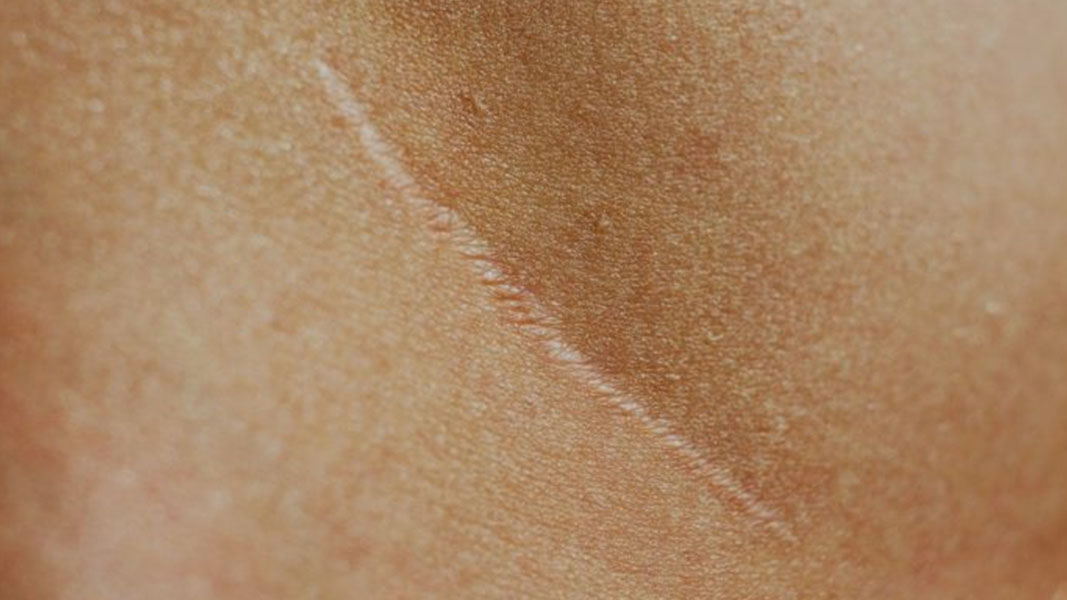How does a company with a lead asset cancer drug also get into dermatology?
What does blood cancer and keloid scars have in common?
The answer is: fibrosis.
Fibrosis is another word for scarring. It is the key in the process of healing where connective tissue replaces normal tissue to form scar tissue. It’s how we heal from cuts and scratches, and how our organs heal after illness or injury. When this process goes unchecked however, it can lead to serious pathological issues.
Fibrosis can affect any organ and is an underlying mechanism in multiple disease processes. From cancer to keloids, the biochemical process of fibrosis is the same.
Clinical stage pharmaceutical company Pharmaxis (ASX: PXS) knows a thing or two about fibrosis due to their experience in amine oxidase chemistry. The Company is developing multiple drugs designed around the inhibition of certain enzymes key to the process of fibrosis in the body.
Those enzymes are called lysyl oxidases, or LOX for short, and refer to a broad family of enzymes involved in the deposition and crosslinking of extracellular matrices within cells, leading to scar tissue buildup.
Lead asset PXS-5505 is an oral pan-LOX inhibitor currently undergoing trials as a potential treatment for multiple cancers. PXS-6302 is also a pan-LOX inhibitor, but is applied topically for the treatment of fibrosis in the skin.
As fibrosis is an integral process in the symptomatology and progression of many conditions, medical researchers have a keen interest in being able to prevent or reverse it.
Recently, Pharmaxis CEO Gary Phillips has been doing the rounds, attending conferences worldwide to confirm the Company’s position as global leaders in antifibrotic medicine.
The process of fibrosis underpins the worsening of symptoms in rare blood cancer myelofibrosis where the accumulation of fibrotic tissue impairs the production of blood cells in the bone marrow. Consequently, patients suffer reduced immunity and bleeding issues. With a life expectancy of 5 years post diagnosis, and only one class of drugs in use to treat symptoms. there is a significant unmet need. PXS-5505 is in Phase 2 trials for myelofibrosis which will report on results at the end of the calendar year.
And whilst the human body is incredibly complex, the biochemical processes powering things are often very similar across systems. It is due to this that Pharmaxis found themselves looking into fibrosis in the skin, and is now trialling a drug that has serious potential to promote scarless wound healing in partnership with the University of Western Australia, being led by Professor Fiona Wood AM.
Similarly, the Company’s underlying technology has piqued the interest of multiple researchers and institutions who have taken an interest in Pharmaxis’ drugs.
The University of Rochester in New York approached the Company wanting to trial PXS-5505 in models of liver cancer. Results showed that the drug was able to break down fibrotic tissue around the tumour, allowing for better penetration of chemotherapeutics. This preclinical finding led to the initiation of a Phase 2 trial in liver cancer patients which will commence in 2022.
The Garvan Institute in Sydney, Australia has also taken a keen interest in PXS-5505, putting it to the test in preclinical models of pancreatic cancer with promising results. Despite advances in oncology, pancreatic cancer still portends the worst prognosis with patients often given only 6-8 months to live, even with our best therapeutics.
Other institutions worldwide are jumping on the Pharmaxis bandwagon with serious interest in LOX enzyme inhibition for a variety of indications including: myelodysplastic syndrome being studied in Germany and melanoma, glioblastoma and head and neck cancers in the USA.
The initiation of preclinical work and clinical trials by external organisations means that there is a significant cost saving to Pharmaxis. The Company retains the rights to the drug and the results, but the research work is organised, carried out and totally or partially funded by the researching institution.
The list of other conditions where fibrosis is a key driver of disease is endless, putting Pharmaxis in a unique position to pick and choose which indications they pursue to service the indication of highest unmet need, and commercial viability.
Being on the cusp of Phase 2 trial results for myelofibrosis, the Company could soon find themselves with an influx of key opinion leaders seeking out their drugs to trial as the PXS-5505 results prove their concept.
Original and new shareholders alike are keenly waiting for those trial results which will prove essential in propelling the business forward and delivering shareholder value. All that’s left to do is wait.
- Parkinson’s UK backs Pharmaxis with $5 million to slow the onset of incurable disease with ‘ground breaking’ trial - September 1, 2022
- How this company is developing medtech to support Indigenous community health - August 22, 2022
- A round of ap-paws for PharmAust, changing the ruff prognosis for dogs with lymphoma - August 17, 2022












Leave a Comment
You must be logged in to post a comment.